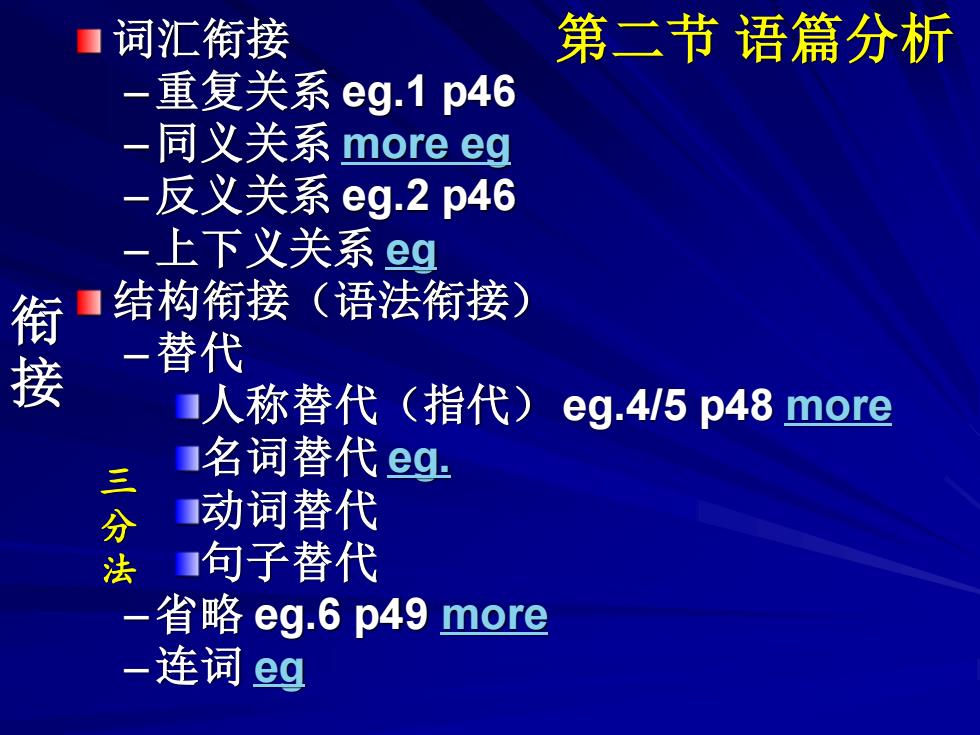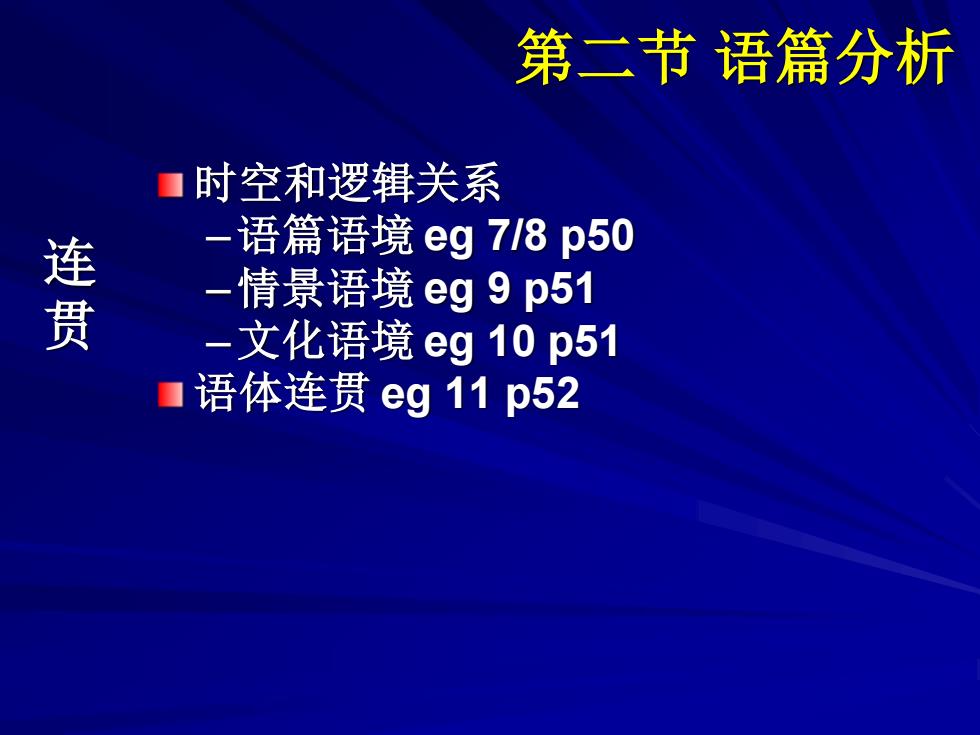
■词汇衔接 第二节语篇分析 重复关系eg.1p46 -同义关系more eg 反义关系eg.2p46 上下义关系eg 结构衔接(语法衔接) 衔接 -替代 人称替代(指代)eg.415p48more 名词替代eg 三分 动词替代 法 句子替代 省略eg.6p49 more 连词eg
词汇衔接 第二节 语篇分析 –重复关系 eg.1 p46 –同义关系 more eg –反义关系 eg.2 p46 –上下义关系 eg 结构衔接(语法衔接) –替代 人称替代(指代) eg.4/5 p48 more 名词替代 eg. 动词替代 句子替代 –省略 eg.6 p49 more –连词 eg 三 分 法 衔 接

第二节语篇分析 ■时空和逻辑关系 -语篇语境eg7/8p50 连贯 -情景语境eg9p51 -文化语境eg10p51 语体连贯eg11p52
第二节 语篇分析 时空和逻辑关系 –语篇语境 eg 7/8 p50 –情景语境 eg 9 p51 –文化语境 eg 10 p51 语体连贯 eg 11 p52 连 贯

语篇特征: Under normal circumstances,we e expect of a text that it should be coherent (i.e. have continuity of sense)and cohesive (i.e.display connectivity between its surface elements)and that it should display distinct patterns of thematization. 语篇应该连贯(即意义上有连续性)、衔接(即 表现为表层结构上的粘着性),且突出主题。 -Hatim Mason (1999:192).Discourse and the Translator OImatar'zerfan
Under normal circumstances, we expect of a text that it should be _(i.e. have continuity of sense) and _ (i.e. display connectivity between its surface elements) and that it should display distinct patterns of thematization. 语篇应该连贯(即意义上有连续性)、衔接(即 表现为表层结构上的粘着性),且突出主题。- -Hatim & Mason(1999: 192). Discourse and the Translator 语篇特征: θɪmətaɪ'zeɪʃən cohesive coherent